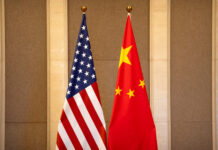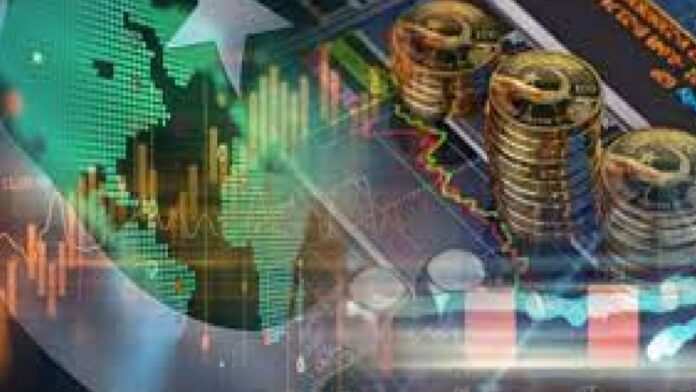Economic development is always linked with political stability. Political polarization in Pakistan is the major reason for the country’s economic downfall. When politicians and dictators came into power, they focused more on perpetuating their political careers rather than promoting national interests. The country’s initial economic models lacked consistency and continue to do so. The economic history of Pakistan, based on three eras, shows political polarization as a reason for the current economic setback.
Inconsistency in politics leads to economic upheaval. In different political phases in Pakistan, different leaders came to power and introduced their economic models after assuming office. Every time, the new administration established new policies while changing the ones that had been in place before. This resulted in the state receiving new models without any incentives. This proves that whoever comes into power wants to pursue their interests rather than the state’s national interests.
S. Akbar Zaidi in his book, “Issues in Pakistan Economy” discusses this issue in great detail. He mentions the three eras and the evolution of Pakistan’s economy. The first era is the ‘Era of Exploration’ from 1947 to 1979. After independence, the Pakistani territory had no industries, economic sectors, or resources. Initially, Pakistan was an economically weak state. The absence of a constitution made it more difficult because neither was any constitution established nor any economic policy introduced for the country.
Until 1956, there was no economic model. After that President Ayyub Khan came to power and introduced the Howard Trickle-Down Model. It was a capitalist model. He developed the economic capacity through industrialization and emphasized privatization which created jobs in the country.
The first requires stabilizing the economy through debt reduction, expanding the taxable income, organizing national resources, reducing losses because of state-owned enterprises, cutting down unnecessary development spending, removing shortfalls in energy and infrastructure sectors, controlling inflation, and keeping the currency stable. The second requires structural reforms, human resource management, uniform tax policy, exclusion of microeconomic biasness, and enhancement of competition in the market. All the above-mentioned measures can bring economic balance to the country.
After President Ayyub Khan, Prime Minister Zulfikar Ali Bhutto came to power and introduced nationalization. It was a socialist model. It was opposite to Howard’s Trickle-Down Model.
Then ‘The Era of Twisted Economy’ started from 1979 to 2000. President Zia ul Haq did not introduce any model. Since Pakistan was receiving aid as a result of the Afghan War, it had an aid-based economy. When Prime Minister Benazir Bhutto came into power, the country’s economy was suffering, and she went to the IMF for short-term loans. An economic model was yet to be made, but her government was toppled.
Prime Minister Nawaz Sharif did the same as he also went to the IMF for loans. It should be remembered that the country has gone to the IMF 23 times for loans. The most recent request was in 2019. Nevertheless, because of uncertainty in politics, the nation is still caught in the financial trap of the IMF.
Then came ‘The Era of Problematic Economy’ from 2000 onwards. Because of nuclear weapons tests in May 1998 and the Kargil Episode in 1999, the USA sanctioned Pakistan. However, these sanctions were lifted and US aid to Pakistan began after Pakistan backed the USA in its “War on Terror” since the 9/11 attacks. President Pervez Musharraf introduced the Consumer Credit Model. He invested in educated people and provided them cheap loans from which they started their small industries and this created jobs in the country.
In 2009, there was no proper economic model and then Prime Minister Yousaf Raza Gillani went to China and the IMF for help, but they did not show much interest in helping Pakistan. In 2013, Prime Minister Nawaz Sharif introduced the ‘Crony Capitalism Model’. This model only supported the industrialists. The model was made for specific industrialists, not for all industrialists, such as for iron, sugar, port, and housing industries. It brought prosperity but only for that particular industrialist community.
In 2019, the Riyasat-e-Madina Model was introduced by Prime Minister Imran Khan. Its purpose was to uplift the poor class through the Ehsas program and health cards. The currency was devalued, imports were banned, and exports were increased, to bring capital into the country. Because of the short-term economic models, no proper policy was adopted to stabilize the economy of the country. It is the biggest reason for fragile economic growth
There is a need for a proper and sustainable economic model. Stakeholders should come together and make a proper economic model which should be there for at least 10 to 20 years and should not be changed even if the regime changes. To bring economic stability, an effective fiscal and monetary policy is needed. There is a requirement for the two following mechanisms for economic prosperity; stability in politics with good governance, and reforms in the present economic structure.
The first requires stabilizing the economy through debt reduction, expanding the taxable income, organizing national resources, reducing losses because of state-owned enterprises, cutting down unnecessary development spending, removing shortfalls in energy and infrastructure sectors, controlling inflation, and keeping the currency stable. The second requires structural reforms, human resource management, uniform tax policy, exclusion of microeconomic biasness, and enhancement of competition in the market. All the above-mentioned measures can bring economic balance to the country.























